Types of Teeth
Types of Teeth: We must have noticed when gazing in the mirror that, while we all have teeth, they are all distinct in appearance. Teeth are hard features found only in vertebrates. Although other invertebrates have similar teeth, their structure and functions are significantly different. Teeth are ectodermal organs, despite their appearance as bones. Your hair, skin, and sweat glands are also ectodermal organs. Human teeth come in a variety of shapes and sizes. Your teeth play an important function in digestion. They chop and crush food to make it simpler to swallow. In this article we are going to discuss that what are the types of teeth, what are the functions of different teeth, anatomy of those teeth and much more.
Types of Teeth in Mouth
Teeth in vertebrates vary in structure and quantity. These tooth arrangements are expressed using a unique formula known as the dental formula, which is expressed in fractions. The types of teeth in mouth of children are different from adults, Most children have 20 main teeth that appear between the ages of 4 months and 6 years. These are baby teeth that will fall out to make way for permanent adult teeth. The average adult has 32 permanent teeth. However, some persons are born with missing teeth that is called hypodontia and others with extra teeth that is called supernumerary. Teeth are among the most powerful components of the human body. It consists primarily of proteins (collagen) and minerals (calcium).
Types of Teeth in Human
- A person’s tooth counts and types of teeth change as they age. People typically have two sets of teeth throughout their lives: primary, or baby teeth, and permanent, or adult teeth.
- There are several types of teeth in Humans that conduct activities such as cutting, tearing, shearing, grinding, and crushing.
- Teeth are made up of several layers, including enamel, dentin, pulp, and cementum. The outer surface of the tooth is made of enamel, the body’s toughest material. Dentin, which is softer than enamel, is the second layer, and pulp, which contains nerves and blood arteries, is the deepest layer inside the tooth. Cementum is found on the tooth’s root and behind the gums.
- The jaw muscles power the teeth, while saliva secreted in the salivary glands lubricates them.
What are the Types of Teeth?
We have numerous types of teeth, and each type performs a certain role. Teeth vary in shape because each tooth has a specific function during mastication (chewing) and, finally, digesting. Humans have four kinds of permanent teeth:
- Incisors – Humans have eight incisors, four in the upper jaw and four in the lower jaw.
- Canines – The majority of people have four canines, one in each quadrant (upper right, upper left, lower right, lower left).
- Premolars – Humans have eight premolar teeth, with two on each side of the jaw.
- Molars – Humans have a total of 12 molars, six in each jaw.

Types of Teeth and Functions with Diagram
Here we discussed all 4 types of teeth and their functions.
Incisor Teeth function –
Each incisor has a single thin edge that aids in the cutting of food. The incisors are the most obvious teeth in your mouth. The majority of individuals have four incisors on the upper jaw and four on the lower jaw. These are your front two teeth as well as the teeth on both sides of them. These teeth have cutting edges and are designed to chop food into little, manageable pieces.
Canine Teeth Functions –
Canine teeth acquire their name from their resemblance to a dog’s teeth. They have more points than other types of teeth. Canines are sometimes known as cuspids. Canine teeth aid in the tearing of meals such as meat and crunchy vegetables. Canines are sometimes referred to as “eye teeth” due to their location right beneath your eyes. Canines are found in both the upper and lower jaws of humans.
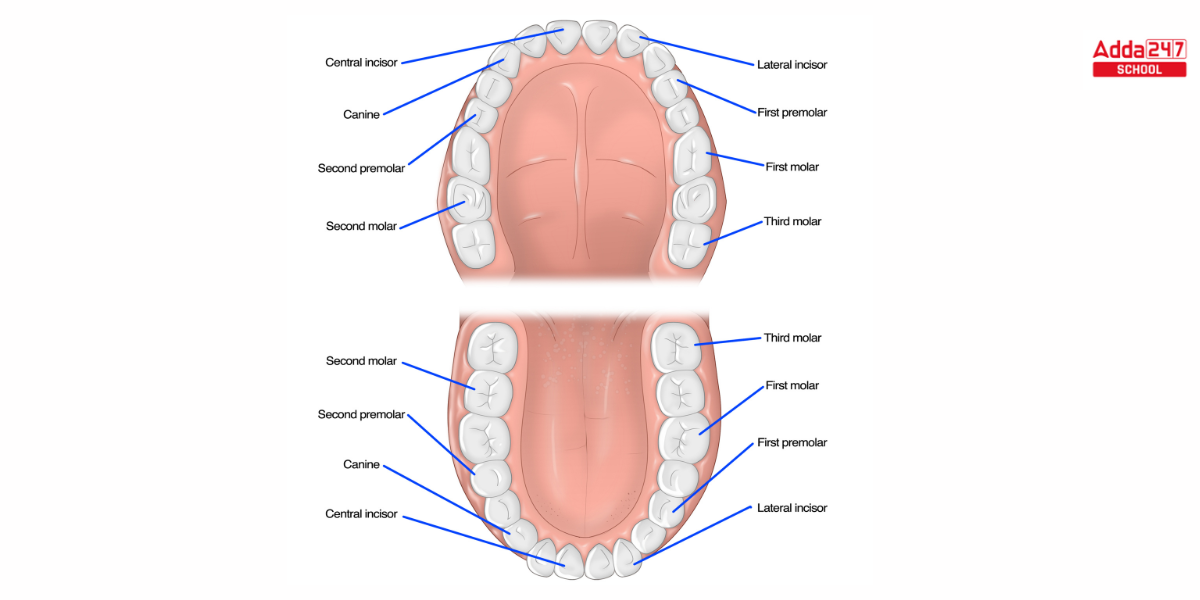
Premolar Teeth Function –
Premolars, commonly known as bicuspids, are placed behind the canines., are the teeth that sit between your canines and your molars (the teeth in the back of your jaw). Premolar teeth combine the characteristics of canines and molars. They aid in the tearing, crushing, and grinding of food into smaller pieces.
Molar Teeth Function –
The majority of adults have 12 molar teeth, three in each quadrant. the molar teeth are located in the back of your mouth. It has a big, flat biting surface that is ideal for grinding food. Because molars are your primary eating teeth, they are useful for crushing and grinding food. The majority of your chewing (approximately 90%) occurs here.
Wisdom Teeth
Wisdom teeth are classified as molar teeth. So, whether you’ve had your wisdom teeth extracted or were born without them, you presumably have eight molars in total. Wisdom teeth, also known as third molars, appear between the ages of 17 and 25.
Teeth Diagram
A tooth is made up of two primary structures – Crown and Root.
Crown
The crown area of your tooth above your gums is the part that is visible to people. Your dental crown is covered in enamel, a strong, protective substance.
Root.
This is the component of your tooth that is attached to your jaw. Because your gums cover it, you can’t see the root. The root connects your tooth to the periodontal cartilage. It is the delicate connective tissue that lines the socket of your tooth.
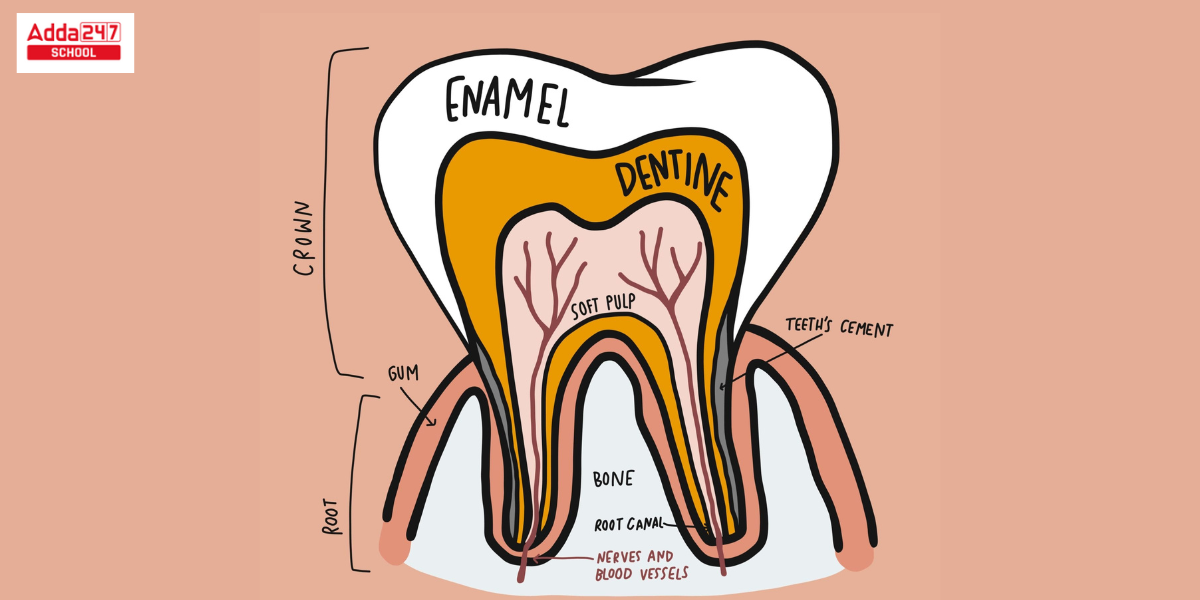
Type of Teeth Diagram
The type of Teeth diagram is given below.
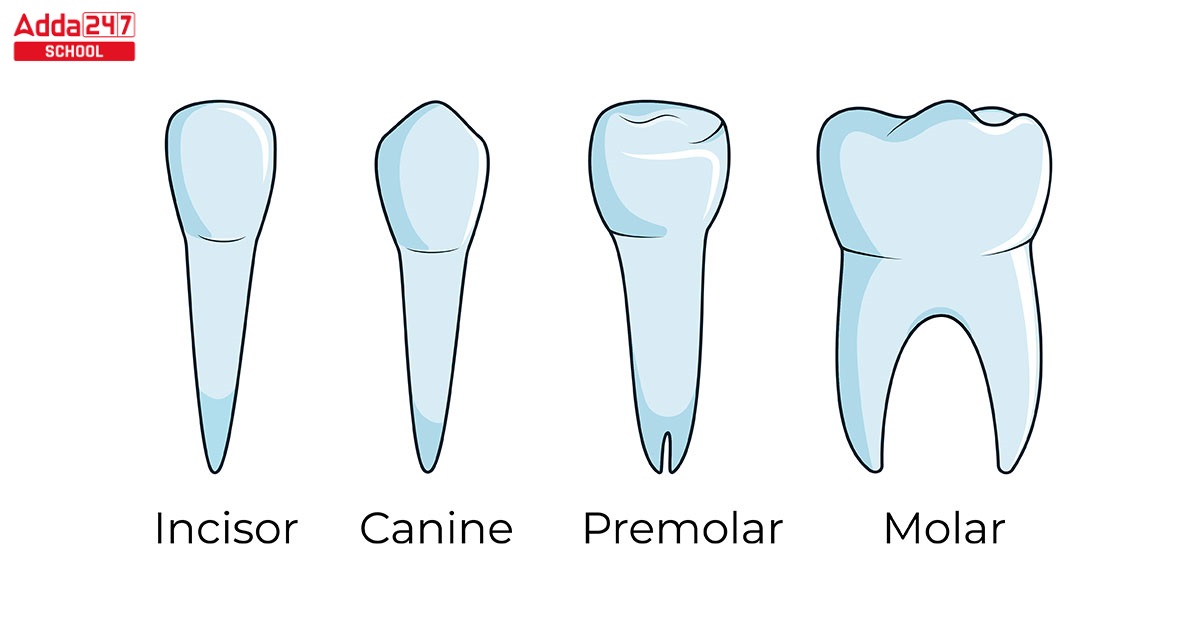
What are the Layers of our Teeth?
Humans consume food throughout their lives. As a result, teeth must be extremely strong and firmly attached in order to withstand years of chewing. The enamel layer protects the white, exposed area of the tooth. This is the body’s most durable substance. Your teeth are made up of 4 major layers –
Enamel – This is the tooth’s protective outer coating.
Dentin – A layer of dentin exists just beneath your enamel. Cavities become more likely when lost enamel exposes dentin.
Cementum – Cementum protects the root of your teeth. It aids in properly anchoring your tooth in your jaw.
Teeth Pulp – The innermost layer of your tooth is called the pulp. It is made up of nerves, blood vessels, and connective tissues.
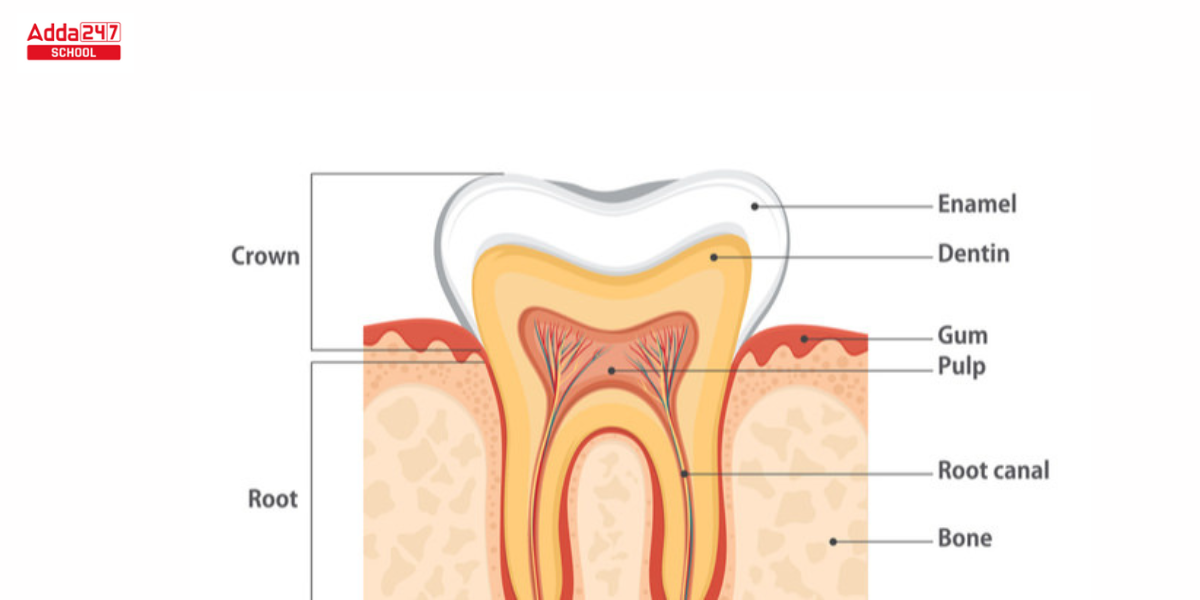
मनुष्य में दांत कितने प्रकार के होते हैं
मनुष्य में विभिन्न प्रकार के दांत होते हैं, जिन्हें मुखदंत कहा जाता है। मानव मुखदंत निम्नलिखित प्रकार के होते हैं:
- कैनाइन (Canine): इने दांत की मुखप्रधान उभयधरी होती है और इसकी नूक किसी चिज को फाड़ने के काम आती है।
- प्रीमोलर (Premolar): प्रीमोलर दांत मुख के दोनों ओर स्थित होते हैं और इनके साथी दांत बैकवाड़ या मोलर कहलाते हैं।
- मोलर (Molar): मोलर दांत सबसे बड़े और चर्मिक दांत होते हैं, जो खाने में चबाने के काम आते हैं।
- इन्साइजर (Incisor): इन्साइजर दांत मुख के सामने होते हैं और इन्हें देखकर आप खाना काटते और चबाते हैं।
- केनाइन (Cainian): केनाइन दांत मुख के कोनों में स्थित होते हैं और इनकी मुखप्रधान उभयधरी नूकें होती हैं।
इन प्रकार के दांत मनुष्य के मुख में पाए जाते हैं और विभिन्न कार्यों के लिए उपयोग किए जाते हैं, जैसे कि खाना काटना, चबाना, और खाने को पीसना।
| Related posts | |
| Types of Angles | Types of Triangles |
| Types of Motion | Types of Bank |
| Types of Fever | |

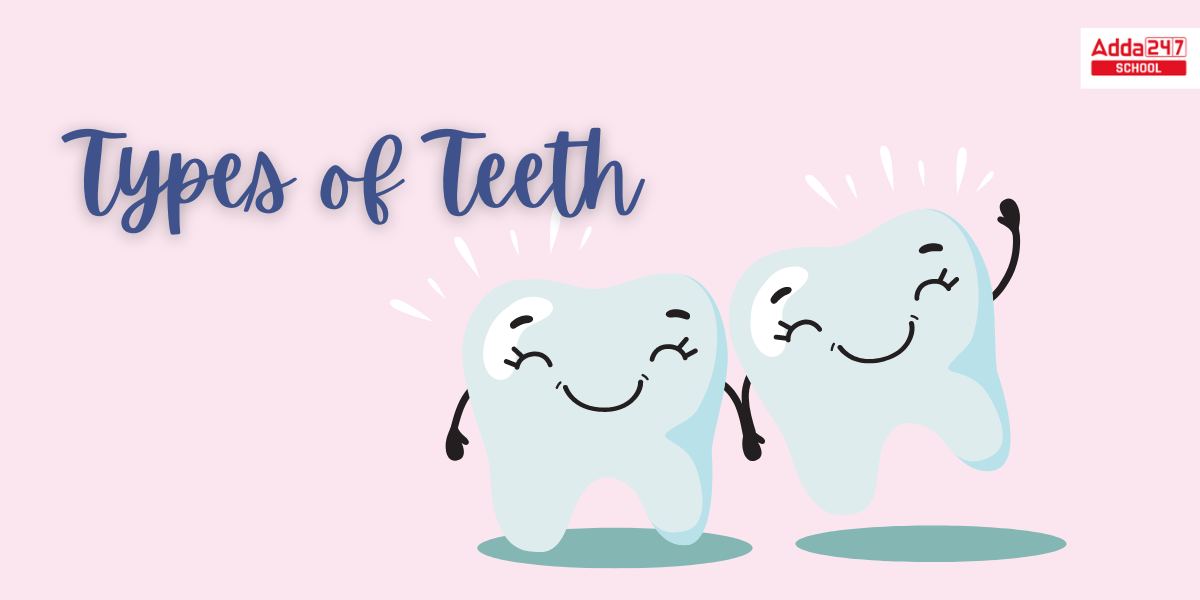







 NEET UG 2026 Registration: NTA releases ...
NEET UG 2026 Registration: NTA releases ...
 CUET UG 2026 Online Registration Started...
CUET UG 2026 Online Registration Started...
 CUET 2026 Free Batches Launched by CUET ...
CUET 2026 Free Batches Launched by CUET ...














